Committed environment campaigner from beginning
Margaret Robertson has collected, curated and led the editing of the Heartland Journeys stories. This is her story, the country teenager who jumped into environmental campaigning over 40 years ago and is still there. Nicole Hodgson spoke with Margaret.
NH: I’m curious about how one family creates environmentalists in you and your brother Peter, and a naturalist in your brother Ian.
MR: It all began at the farm. Gres, my father, came from a farming family just south of Kojonup. At age 21, with the generous help of established farmer Percy Thorn, he bought a Kojonup property that became our family farm ‘Yarrak’. When Gres arrived there’d been some clearing, mostly ringbarking, but it still had a lot of bush. My mother Jill also came from a Kojonup farming family.
My brothers and I loved the farm while growing up, and still do. I think we caught that strong bond from Gres and Jill, who had a strong sense of place ‒ Gres never wanted to be anywhere else or even take an off-farm holiday, and Jill, at 93, is determined to stay there.
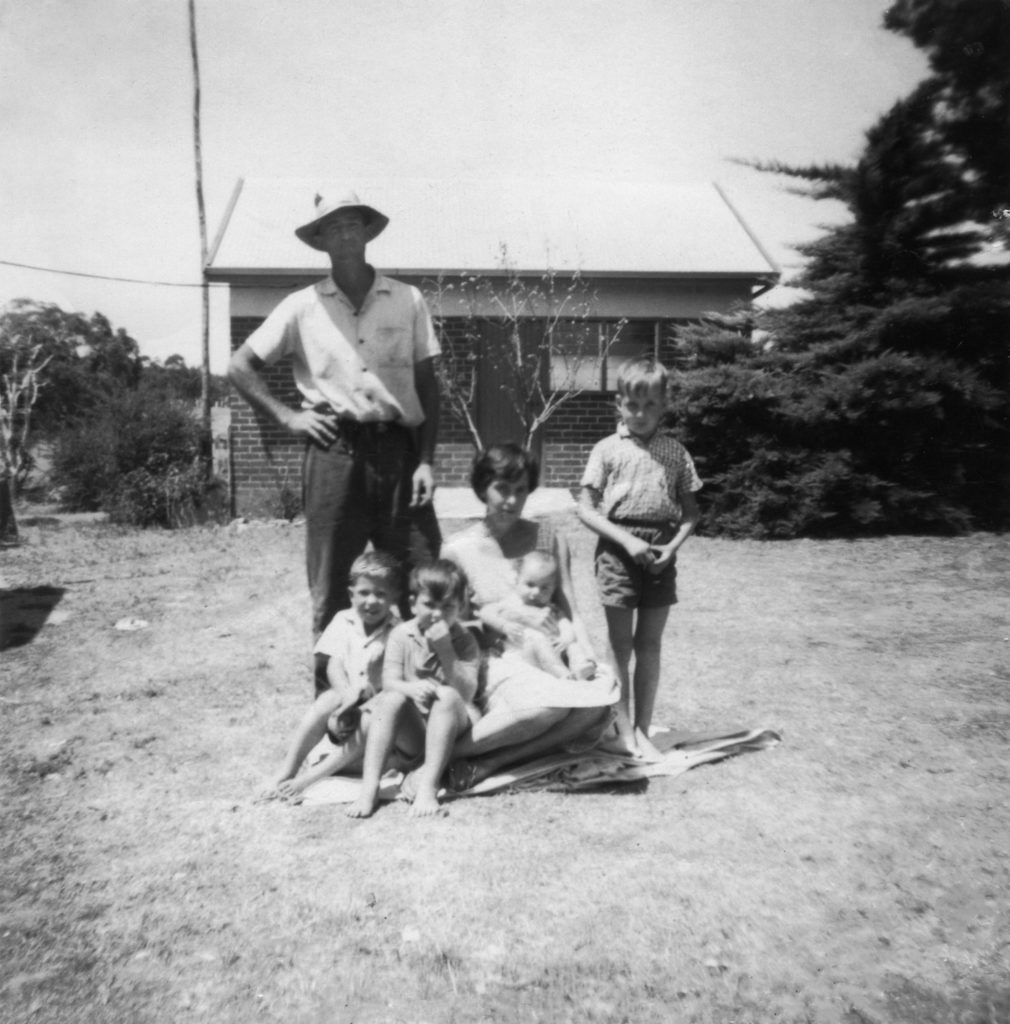
Gres enjoyed the look of the farm with its stately paddock trees, the patches of bush, creeklines and undulating paddocks. He kept it largely free from troublesome weeds, especially dock – we were all recruited as dock grubbers.
He had what I’d call a landcare attitude — I’m not sure that it went as far as a landcare ethic since he cleared a lot of land, but at least he did so quite thoughtfully! He kept and enjoyed many paddock trees, fenced sections of the main creekline, and didn’t overstock the paddocks.
At Gres’ funeral, his sister Kitty provided some insight into the roots of his landcare attitude, with this story of the time they spent together as children: “In a patch of jam trees beside the creek was an expanse of granite that sprang to life when the first rains produced a wild little creek with a tiny waterfall. Here we had a garden of ferns, lichen, moss and tiny trigger plants which we tended very carefully during winter and spring. A shy pair of curlews lived there … Each year for most of our childhood we returned to this spot tidying and refurbishing.”
My eldest brother Ian also developed an interest in nature at a very young age. Around age five or six, Jill and Gres started giving him science and nature books and he began sending insects to the WA Museum to be identified. By the time he was 16, my brother Peter had started fencing off trees and other creek areas on the farm.
Most of the paddock clearing on the farm was finished by 1968, except for one quite large area of bush. Its clumps of white spider orchids and sprays of rainbow-coloured chorizemas were some of my favourites. Ian visited that bush many times and was particularly knowledgeable about orchids, which encouraged my interest.
In the early 1970s, it became known that the state government would bring in catchment clearing controls. Our farm was within a ‘clearing ban’ catchment so Gres decided to clear most of that last big area of bush before the ban was introduced. I was nine at the time. Ian, who was eight years older, had earlier tried to convince Gres not to clear it and to buy neighbouring land instead. Perhaps because Gres didn’t want any debt from a land purchase, and he and Jill still had three of us to put through boarding school, he decided additional income from more paddock was needed, so he cleared it, leaving some bush and patches of trees.
I remember standing at the top of the ‘New Country’, which that paddock was called, and thinking how important it was to form some kind of park to look after the bush and animals. At about age ten, my thinking would have been fairly naive, but I had this sense of the importance of creating places where plants and animals could survive.
I had other conservation influences. My Aunty Kath, who farmed next door, was keen on the bush and wildflowers. As a youngster I spent quite a lot of time with her and my cousin Dan, who was also interested in the bush.
Later, I had a high school economics teacher who was concerned about Alcoa’s bauxite mining. I visited the Environment Centre in Hay Street Perth to find information and went along to one of the bauxite mining protests. I have no idea now how I managed to get out of boarding school to do that!
NH: It sounds like you were already embarking on your life’s journey.
MR: I was definitely on the path. I have a clear memory of a school holiday in 1980, walking into the kitchen and spotting an envelope for Peter on the table. It contained a letter and some leaflets from the Tasmanian Wilderness Society (TWS), in response to an inquiry from Peter about the campaign to save Tasmania’s Franklin River from flooding by a proposed hydroelectric dam.
In 1981, when I was in Year 12, Peter rode his pushbike 3,600 km from Perth across the Nullarbor to Victoria, and then down through Tasmania to Hobart, promoting and fundraising for the Franklin campaign. My school principal in Perth, who had recently visited Tasmania, gave me a newspaper clipping about his arrival in Hobart.
Peter sent me campaign information and not long after my final exams, I decided to head to Tasmania to join the Franklin campaign. In early January 1982, I climbed the steps to the TWS office in Hobart, only to learn Peter was away rafting on the Jane River. I knew no one else, but at the reception desk was a friendly volunteer Karen Hughes who said I could stay with her and her partner Kevin Kiernan. Kevin’s involvement in the Save Lake Pedder campaign began as a high school student and his writings about that campaign, including the deep loss he felt over the flooding of that magical place, still move me.
I found the office a welcoming, busy place and quickly found a niche doing reception work. This had the benefit of introducing me to the campaigners, as well as people who came in to donate or volunteer. I helped with various tasks and also handled the newspaper clippings, which was a useful way to learn about the campaign. The Franklin campaign was attracting national and international attention, and we’d get the major mainland papers, like the Sydney Morning Herald and The Age, as well as the Hobart Mercury and Launceston Examiner.
I was 17 and this was the start of 18 months of intense work with an incredible team, through to the High Court decision of 1 July 1983 that saved the Franklin. Every anniversary, a dear friend, Karen Alexander, who coordinated TWS’s Melbourne branch, sends around a celebratory email. This year, I spent several glorious days on the Gordon River with Karen, fellow Franklin campaigners and friends, including a short trip up the Franklin River, celebrating that win of forty years ago.
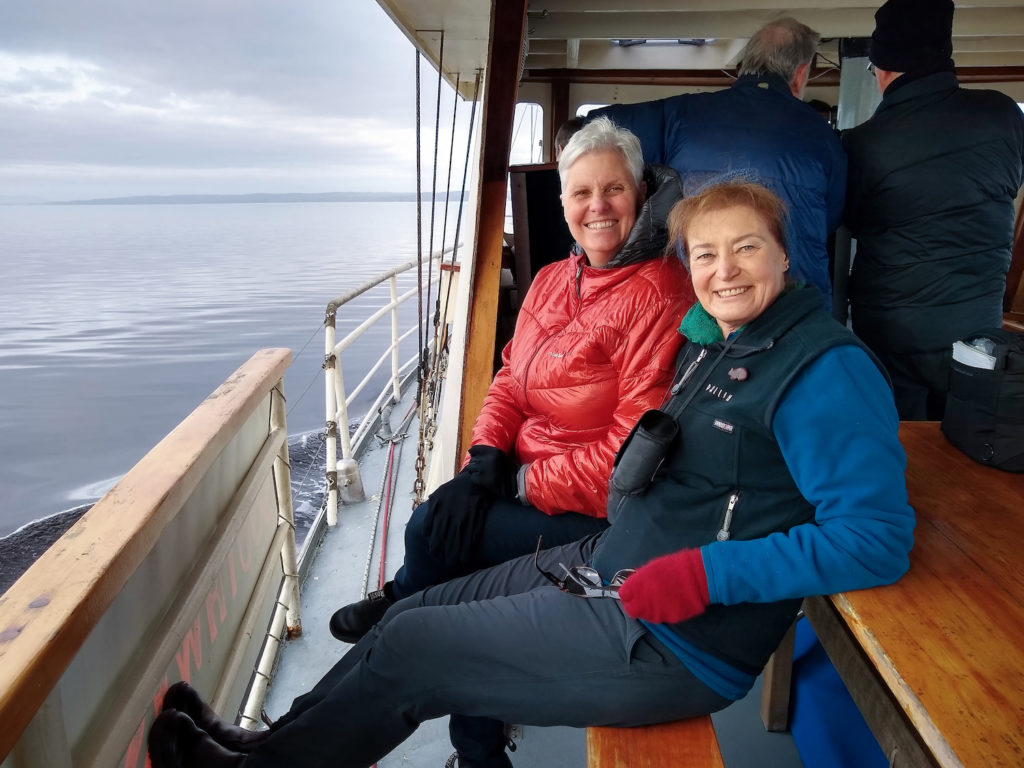
Gres and Jill had a strong work ethic and that influence held me in good stead during the campaign. I became an organiser amidst a constant swirl of activity involving media conferences, public meetings and events, publicity materials, lobbying, visits from prominent mainland and overseas supporters, and campaign strategy meetings.
Everyone worked as volunteers and we survived, in part, through the generosity of friends, family and communal lunches at TWS!
Bob Brown, TWS’s Director, had a sense of humour, warmth, and a big smile. I was not long out of St Hilda’s Anglican School for Girls where the male teachers were often addressed as Sir. So in my first weeks, I automatically called Bob ‘Sir’ or ‘Dr Brown’. With a grin, he’d say, ‘Just call me Bob’.
I was part of the team working on Bob’s bid to be elected to the Tasmanian Parliament in May 1982. The election outcome was disappointing, and it seemed unlikely the No Dams campaign could be won in Tasmania. Bob had a national profile, and he was a passionate speaker, so I canvassed the idea of organising a national speaking tour, which was well received by Bob and the campaign team.
NH: I’m amazed at how young you were and how strategic you were, to be proposing that then!
MR: I was working with a wonderful, clever group of people, mostly older than me, and learning to think strategically was an essential part of being a campaigner.
Bob’s national tour produced media coverage, built more public support, and strengthened the TWS branch network. A significant part of my work around that time involved liaising with over 70 TWS branches in Tasmania and on the mainland. There was no email back then, so I spent a lot of time on the phone and relying on Australia Post!
NH: Did you have a role in the Franklin Blockade?
MR: Dear friends were key organisers of the Franklin Blockade, which was a massive, brilliant undertaking, and brother Peter helped organise training for blockaders in non-violent direct action. The blockade started on 14 December 1982, and Peter was arrested that day. But I was not part of organising the blockade and only headed to Strahan and ‘upriver’ once.
My head was clearly fixed on the forthcoming federal election, so in early 1983 I packed a bag and moved to Melbourne to be part of TWS’s federal election campaign team. We largely focused on 13 mainland marginal seats across four states to mobilise the public to ‘Vote for the Franklin ‒ because only your vote can save it’. The campaign team and the TWS branch network helped to deliver capital city rallies, market research focus groups, and full-page colour advertisements in several major newspapers, produced by wonderful, supportive marketers.
Oh, the excitement we all felt! Bob Hawke won the March 1983 election and on election night declared ‘The dam will not be built.’ Labor lost all their seats in Tasmania, but nationally it was a great outcome for the Franklin, with the new Federal Labor Government well aware that the ‘Vote for the Franklin’ campaign had played a crucial role in their win.
There were many unforgettable experiences during the Franklin campaign. One cold night as I doorknocked along a dark street during the Tasmanian election campaign, I bolted from the veranda of an old, isolated house when the creepiness factor became overwhelming. Being part of a 15,000-strong Franklin campaign rally in Melbourne and sitting in the High Court as the legal case against building the Franklin Dam was argued, stick in my memory. So too does the moment our plane was struck by lightning just as we took off from Melbourne airport for Brisbane where the High Court was about to hand down its final decision. But it wasn’t an ominous sign after all! After their momentous judgment was given, effectively stopping construction of the Franklin Dam, the building emptied, and we waited in the quietness of the foyer while Bob gathered himself in readiness for the large media pack waiting right outside the glass doors. I felt a surge of emotion as Bob walked through those doors to tell the world that the Franklin was saved.
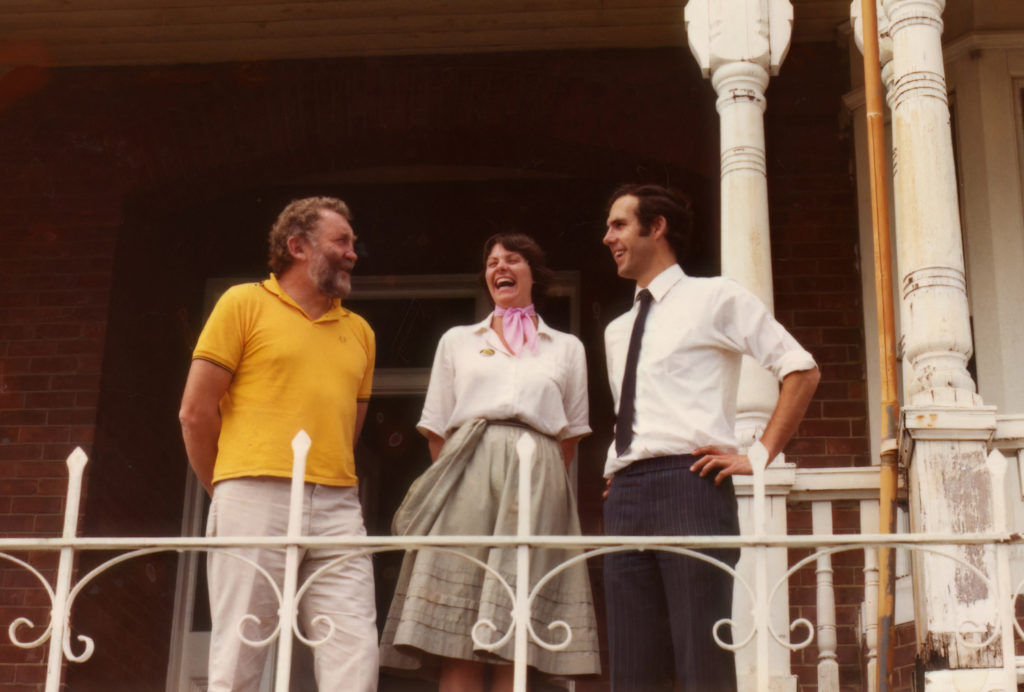
NH: After the extraordinary Franklin campaign, what came next for you?
MR: I saw that it wasn’t possible to run campaigns of that intensity for every threatened wild place, so I had the idea of running a TWS national campaign for wilderness. Seeking legislative protection of wilderness areas was a key focus. During my research, I discovered some environmental lawyers and other groups who were thinking that way too. In 1985, I moved to Sydney to help run TWS’s campaign for a NSW Wilderness Act. It was a huge thrill when the Act was passed in late 1987.
I felt some trepidation early in the campaign. After the Franklin experience, with its reliance on inspiring imagery of the river and wilderness, I worried that a legislative campaign would have little public appeal. But the remarkable work of a fellow TWS campaigner, presenting a slide show of beautiful NSW wilderness images and the campaign message to over 200 community group meetings, was a key factor in its success, as were other letter-writing campaigns and extensive lobbying of parliamentarians.
I was very aware of being a young ‘blow-in’ to the world of NSW wilderness campaigning, which had a long and remarkable history led by other conservation groups. The personal connections and contributions of these groups and individuals were critical – probably more so than I knew at the time. I hear that over two million hectares have been gazetted in wilderness areas, which means a higher level of protection.
That campaign had some memorable times. While lobbying Environment Minister Bob Carr, who had been up for most of the night in Parliament, he fell asleep. Awkward! Another time, Bob Brown and I were in a lobbying meeting with Premier Neville Wran, but he was deeply distracted by another political issue and spent most of the time looking out of the window and talking to his advisor. Fortunately, Bob Carr, who was also present, was wide awake and responsive this time. Nevertheless, it was an uncomfortable meeting.
It wasn’t until near the end of that campaign that I discovered a great, great grandfather, Sir John Robertson was a former Premier of New South Wales and had created Australia’s first national park — Royal National Park. I wasn’t really a blow-in after all!
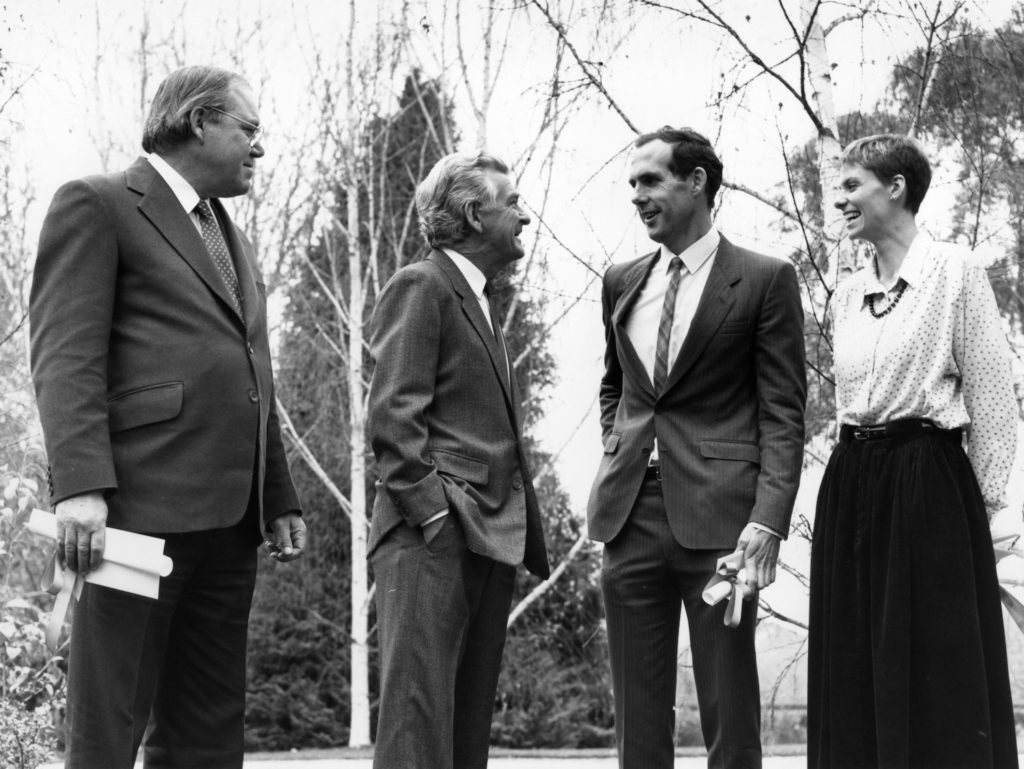
NH: Given the success of the Franklin campaign and the NSW Wilderness Act campaign, perhaps you felt all future environmental campaigns would be as successful?
MR: The 1980s were very positive. There were other wins and extensive favourable media about environmental issues, and environmental education in schools became commonplace. Then the 1990s arrived and the conservation movement had to double down. We are still in that mode!
Homesickness finally drew me back to Perth in 1992 for a science degree with First Class Honours in Environmental Management. My Honours supervisor, Prof. Pierre Horwitz, was a godsend while I was immersed in a thesis about restoration ecology and environmental oral histories.
Coming back to WA was a blessing for me in many ways. During my studies, I had a wonderful experience in late 1994-1995, working with a team of pro bono lawyers who were helping and representing several conservation groups in Supreme Court actions to protect four high conservation value forest areas – Kerr, Hester, Jane and Sharpe – from logging. This effort included major contributions from scientists and showed how remarkable outcomes could be achieved with trust and good communication ‒ without a formal, hierarchical structure. It remains my gold standard for how to work!
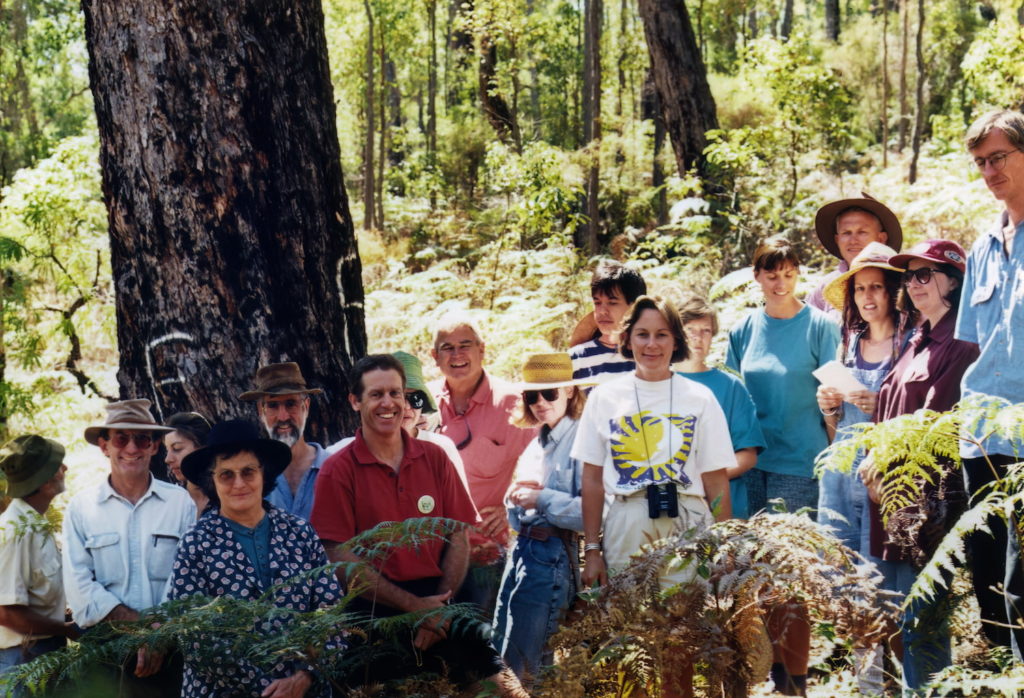
This forest litigation led me ‒ working with many of the same lawyers ‒ to help establish and then coordinate the Environmental Defenders Office WA (EDO). Being part of this community legal service specialising in environmental law felt like some of the most important work I had ever done. I loved working with those good-hearted, talented lawyers and appreciated their critical thinking skills, humour and astonishing efficiency.
A momentous thing happened while I was working at the EDO. In 1991, Bob Brown had asked me to contribute to a new organisation, the Australian Bush Heritage Fund, as a ‘wilderness expert’, and a few years later I moved onto Bush Heritage’s board. That is why, in the EDO one day in 1996, I met my husband-to-be, Keith Bradby. Keith was working for the Minister for Agriculture on strengthening land-clearing controls and came to the office to take me for a lunch discussion about Bush Heritage. He insists that I keep the black pantsuit I was wearing that day!
Our meeting led to the formation of a Bush Heritage support group in WA, made of like-minded people who were interested in conservation efforts on private land. In early 1997, Bob came over for the WA launch of Bush Heritage and its first WA land purchase. It wasn’t my intent to facilitate a bush block purchase near my hometown of Kojonup ‒ the opportunity arose and then one thing led to another. But it was very special for me because I met more Kojonup people who cared about the local environment.
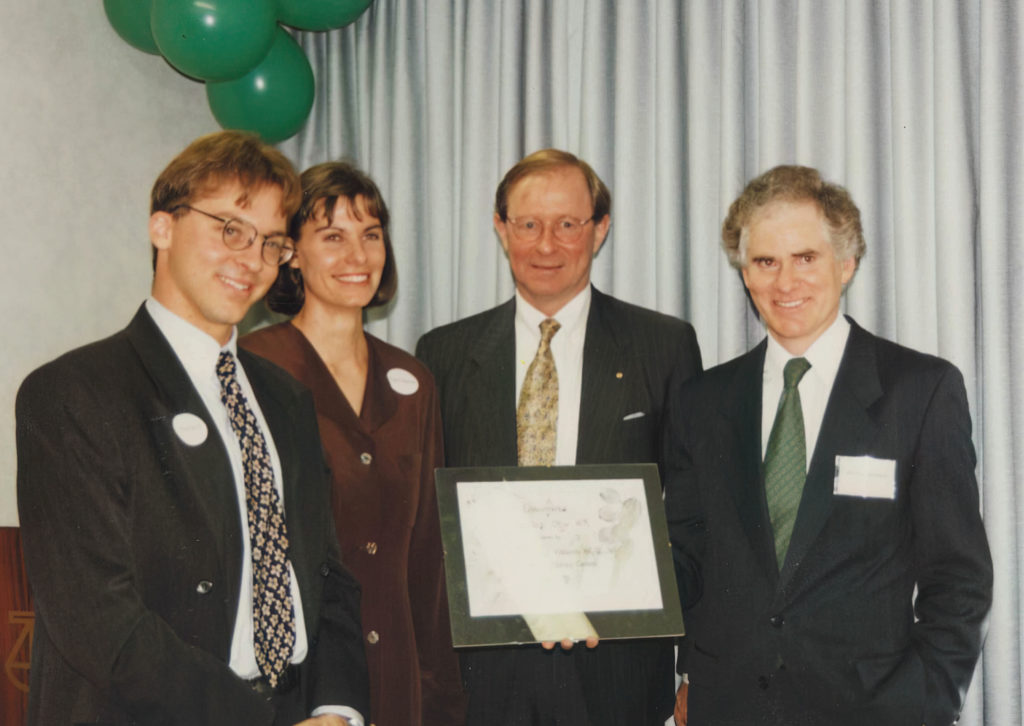
NH: It sounds like your life was coming full circle – back to Kojonup!
MR: That reconnection became even deeper. Several months after moving to Albany with Keith in late 1999, my sister-in-law asked if I would coordinate the development of interpretive displays for a new visitor centre in Kojonup ‒ The Kodja Place. Being passionate about oral histories, I thought this could be an opportunity to record more local interviews. I said yes, but after meeting the Shire CEO at the time, who didn’t seem that keen on more community process and just wanted a consultant’s plan implemented, I thought, ‘Oh God, what have I committed to?’ But we persisted, and the community-led process and the grassroots involvement of all those community members was a key part of the project’s success.
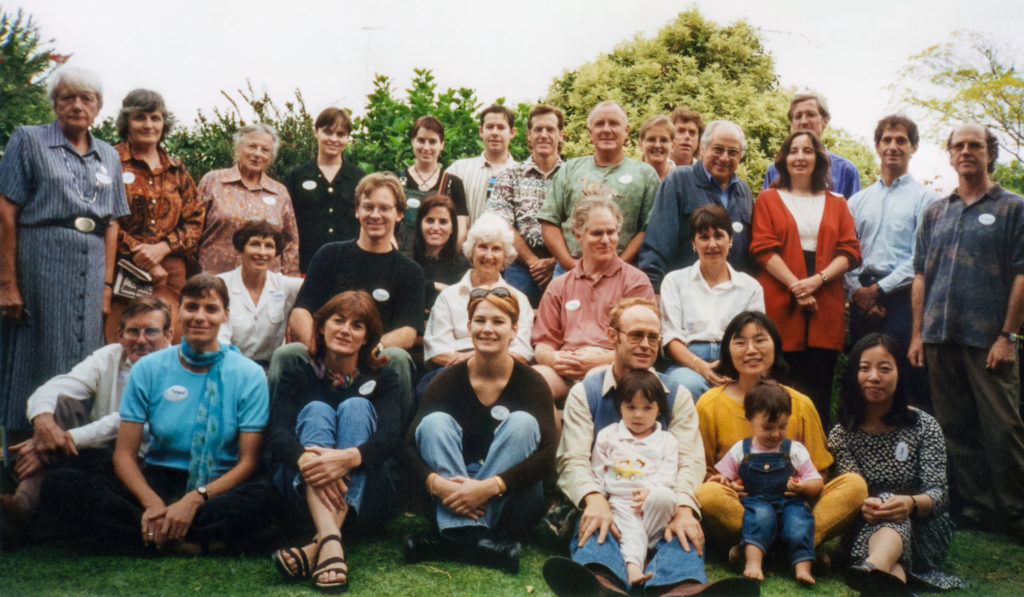
Working with the local Noongar and Wadjela team, it took three years for us all to envisage, plan and create the displays. Intense, challenging and amazing is how I’d sum up the experience. My mother burst into tears when she saw the wonder of the first gallery lit up at night. This creative, locally driven project tapped right into the enormous store of talent, skill, thoughtfulness and knowledge in the community. The partnership and friendships developed with our Perth-based architects and designers were also pivotal. Awards and accolades flowed for the whole Kodja Place precinct and its approach to cross-cultural reconciliation and storytelling. Twenty years on, I still hear glowing feedback from visitors to The Kodja Place.
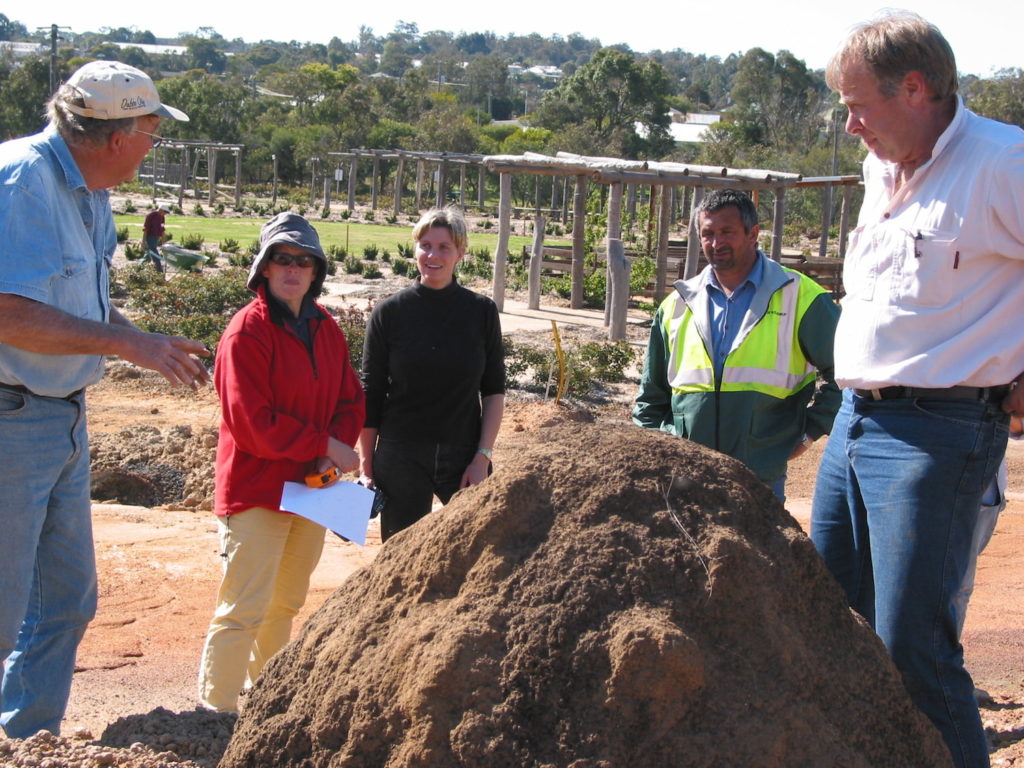
NH: It seems in a very neat way that all your past experience is captured in your work at Gondwana Link because it brings together all of the elements that you have ever worked on.
MR: That is true! I love the mix of nature conservation and ecological restoration efforts; support for Noongar voices and aspirations; the community and farmer engagement; and the informal way in which Gondwana Link collaborates with and supports the groups and people who are part of this big landscape vision. All these threads were highlighted for me while I was part of recording and co-producing our film ‘Breathing Life into Boodja’, which was another adventure.
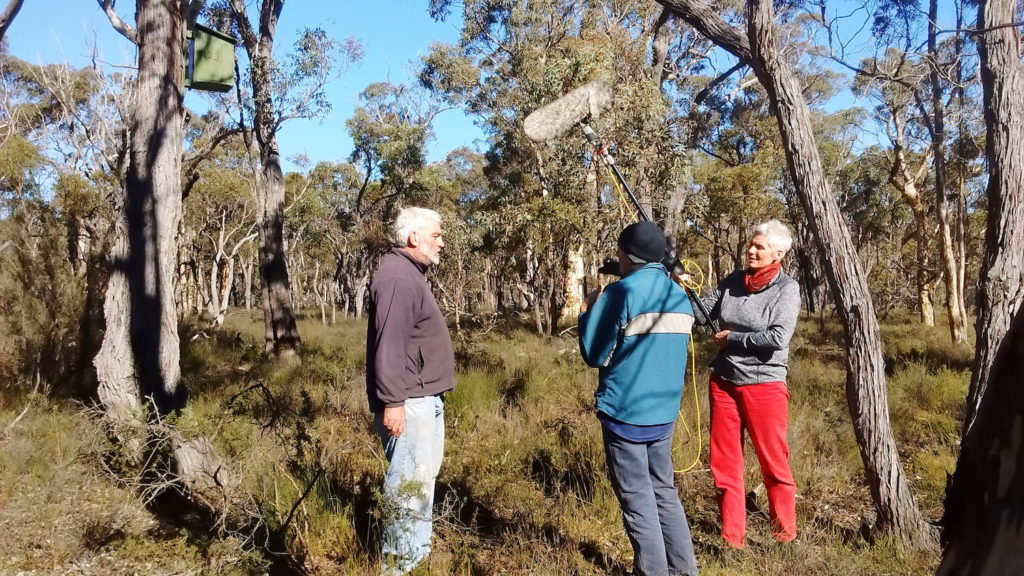
We talk about the Gondwana Link as being 1,000 kilometres of hope, so my ears pricked up when a co-worker’s mum visited the office recently and said, ‘I have moved beyond hope to trust.’ That’s worth thinking about, to trust that change is coming. Looking at all my experiences, across all the wonderful people I have worked with, and how much our work and successes have relied on trust, I think that mum was right!
